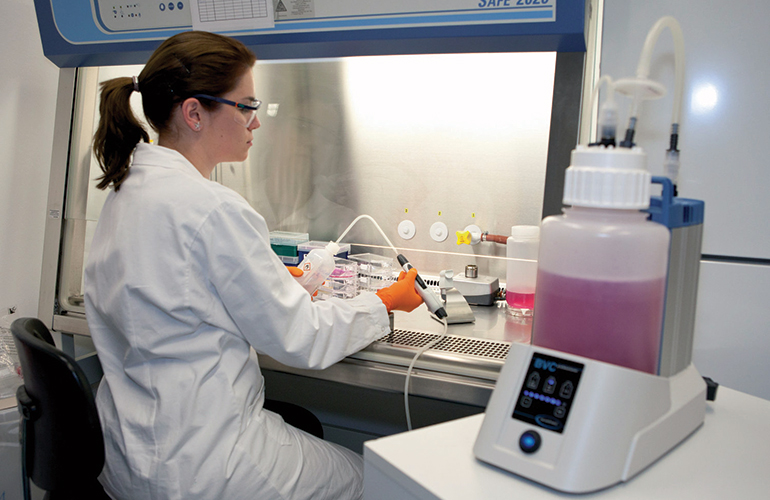
How BVC Fluid Aspiration units increase safety and convenience for your lab.
Fluid aspiration is a common application used to remove liquid from one source and collecting it into another container. This application is often used in life science labs for cell culture work removing spent media as well as other supernatants. Cell culture work often involves the use of infectious agents, which makes safety for lab personnel critical and the need for a safe fluid aspiration system important. Several methods are used in labs to aspirate fluids. We will review one common method and look at some safety consideration with this setup. We will then look at an alternative solution and several key features of this system that offer enhanced safety for the user as well as benefits that make work in the lab more convenient. In addition, we will look at how this solution can be implemented in a lab vacuum system.
First, let us consider a common fluid aspiration setup often referred to as the ‘two-flask’ setup. As described in Biosafety in Microbiological and Biomedical Laboratories (Sixth edition), this setup consists of a suction flask (A), an overflow vessel (B), a HEPA filter (C), and a vacuum source (D) – see figure 1. The suction flask is used as a collection vessel, the secondary flask is used as a fluid overflow vessel and the HEPA filter serves to protect the vacuum source from aerosols. The effectiveness addressing safety of this setup depends on how well it is implemented, which implementation can vary from lab-to-lab. For instance, if the overflow flask is missing and the suction flask overfills, the additional fluid can spill out into the lab or contaminate the vacuum source. Likewise, if the wrong type of filter is installed or missing entirely, the vacuum source is left without the proper protection. In addition, if there is no container or tray nor method of securing the flasks, you run the risk of tipping and potentially spilling the liquid into the lab. So, if not implemented well, there can be some considerable safety implications using the two-flask setup.

Figure 1: Meechan, Paul J., et. Al. Biosafety in Microbiological and Biomedical Laboratories. 6th ed., U.S. Dept. of Health and Human Services, 2020
An alternative solution to the two-flask setup is an optimized system like VACUUBRAND’s BVC Fluid Aspiration Systems, which are designed with safety in mind. The BVC product line is made up of three models: basic, control and professional, each comes with a VHCpro hand controller. The control and professional models are complete solutions with their own integrated vacuum pump, while the basic is designed to connect with an already existing vacuum source. Each version incorporates specific safety features that are meant to protect both lab personnel and the lab environment. For fluid containment, each BVC is available with either a 2- or 4-liter bottle, which is held in a stable base, for safe collecting and disposing of biological waste. An autoclavable 0.2 µm hydrophobic protection filter, fitted between the collection bottle and vacuum source, offers enhanced protection to the lab and vacuum source from contamination, and provides additional liquid overflow protection. Quick couplings, standard on the professional 4-liter model, seal the collection bottle vacuum tight when disconnected, protecting the lab from leakage or fumes when transporting the bottle. An additional safety feature included for the professional model is a liquid level sensor, which automatically shuts off the pump and provides an audible alarm when the collection bottle is close to full, preventing overfilling. These features provide a high level of safety for the lab and the user.
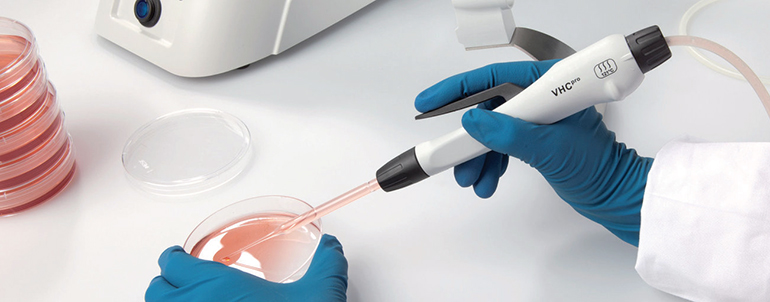
VACUUBRAND’s BVC units also make working in the lab more convenient. With the choice of either a 4-liter polypropylene or a 2-liter glass collection bottle, your decontamination protocols can be accommodated with the possibility of both autoclaving or disinfecting directly in the bottle. With its portable design, the BVC can be easily relocated to allow work to be done in other parts of the lab. In addition, all BVC units have the option of adding a second VHCpro hand controller, which allows up to two users on a single BVC unit saving both cost and space.
The BVC basic is designed to connect with an existing vacuum source like VACUUBRAND’s VACUU·LAN® Lab Vacuum System, which is a modular replacement for centralized systems. VACUU·LAN Lab Vacuum Systems use a single oil-free VACUUBRAND diaphragm pump to support multiple vacuum ports and work stations in a lab or multiple labs. With this approach, several biosafety cabinets and BVC basic fluid aspiration systems can be supported by a single vacuum pump reducing maintenance, lowering energy costs, and reducing noise in the lab. The integrated check valve on the BVC basic helps prevent unrestricted air flows and instabilities from affecting other applications on the lab vacuum system. In addition, the 0.2 µm hydrophobic protection filter on the BVC basic provides protection to the vacuum source and lab environment.
The BVC family of Fluid Aspiration Systems, are designed with important features to safely aspirate and contain liquid, protect the user and lab environment, and make working in the lab more convenient. In addition, by combining VACUUBRAND’s VACUU·LAN Lab Vacuum Systems with the BVC basic, you can support multiple fluid aspiration work stations with a single VACUUBRAND vacuum pump.
Sponsored content by BRANDTECH Scientific

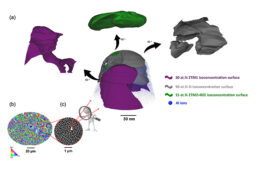
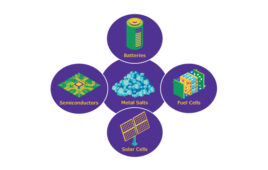

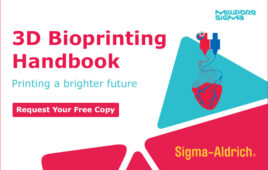
Tell Us What You Think!